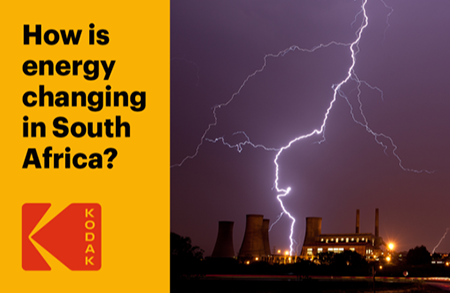Africa is undergoing an energy transition. After years of struggling against insufficient supply, regular blackouts and ever-increasing electricity prices, countries across the continent are beginning to recognise the value in alternative sources that draw on Africa’s abundant renewable resources.
A need for change
2020 saw South Africa’s worst year for load shedding with 859 total hours without power across what was already a very challenging year — a figure that amounts to almost 10% of the entire year.
While many hoped that the regular blackouts were a thing of the past, Eskom has already implemented several periods of load shedding due to a ‘shortage of generating capacity’. South Africans are being urged to use their electricity sparingly. What’s more, the utility has warned of serious energy constraints towards the end of 2021 as it attempts to keep up with urgent maintenance and unplanned breakdowns while burning fuel to keep the lights on.
Andre de Ruyter, Eskom CEO, recently commented on how the country must anticipate an electricity shortage of roughly 4,000MW over the next five years. This conundrum is compounded by the ongoing maintenance required to South Africa’s power infrastructure and the country’s financial instability.
During the winter months, Eskom has stated it will hold back from maintenance. However, once the coldest period is over, regular bouts of load shedding with an extremely narrow margin for error is anticipated during August and September.
Although South Africa is still largely reliant on fossil fuels, the country is beginning to acknowledge not only the merits but the necessity of using renewable energy in their place.
The perfect site for solar
IRENA estimates Africa has a theoretical onshore renewable energy potential of 1,449,424 TWh/h, with more than 80% of African land receiving more than 2mWh/year per m2 of solar potential. In particular, Southern Africa’s abundant sunshine and vast open spaces make it the perfect candidate to adopt solar.
Based on the 2019 Integrated Resource Plan (IRP), coal will account for just 59% of South Africa’s electricity generation compared to today’s 85%, meaning the total contribution of renewables is expected to sit close to 25%.
While renewable energy was once considered an unreachable source of power, the price of solar continues to drop. The levelised cost of electricity from photovoltaic (PV) sources fell by 82% between 2010 and 2019, meaning that renewable energy is currently the most cost-effective option for electricity generation. With the right frameworks in place, utility-scale solar is cheaper than fossil fuel alternatives, particularly when coupled with the other renewable resources available across Africa, such as wind, geothermal and hydropower. As such, solar energy can bring electricity to more rural areas without the need for expensive grid infrastructure.
Additionally, climate change is expected to continue impacting electricity demand in South Africa. Thanks to its warm climate, cooling is a primary requirement for the country across several applications such as agricultural cold stores and refrigeration of food and vaccines. Particularly in a world that has not seen the last of COVID-19, ensuring ample electricity to store vaccines in the appropriate conditions is more pertinent than ever.
A challenging process
The primary obstacles to the widespread uptake of solar are power storage and the ability to transfer to the grid. Self-consumption PV systems are on the rise, but the infrastructure does not yet exist for mass-transference to the national grid. As such, investment in battery technologies could facilitate a solution.
Not only this, but more sophisticated maintenance and operation of the national electricity grid is essential for South Africa’s energy stabilisation, combined with investments into modernising the current infrastructure. By taking a proactive approach to transforming the current power framework, it will be possible to see solutions that improve access to energy, reduce reliance on fossil fuels and reduce unnecessary financial losses.
Are you ready to take the first step towards a greener future? KODAK Solar Products are the solution you need to reduce reliance on the national grid — whether at home or your small business. Find an installer near you today to get started.




